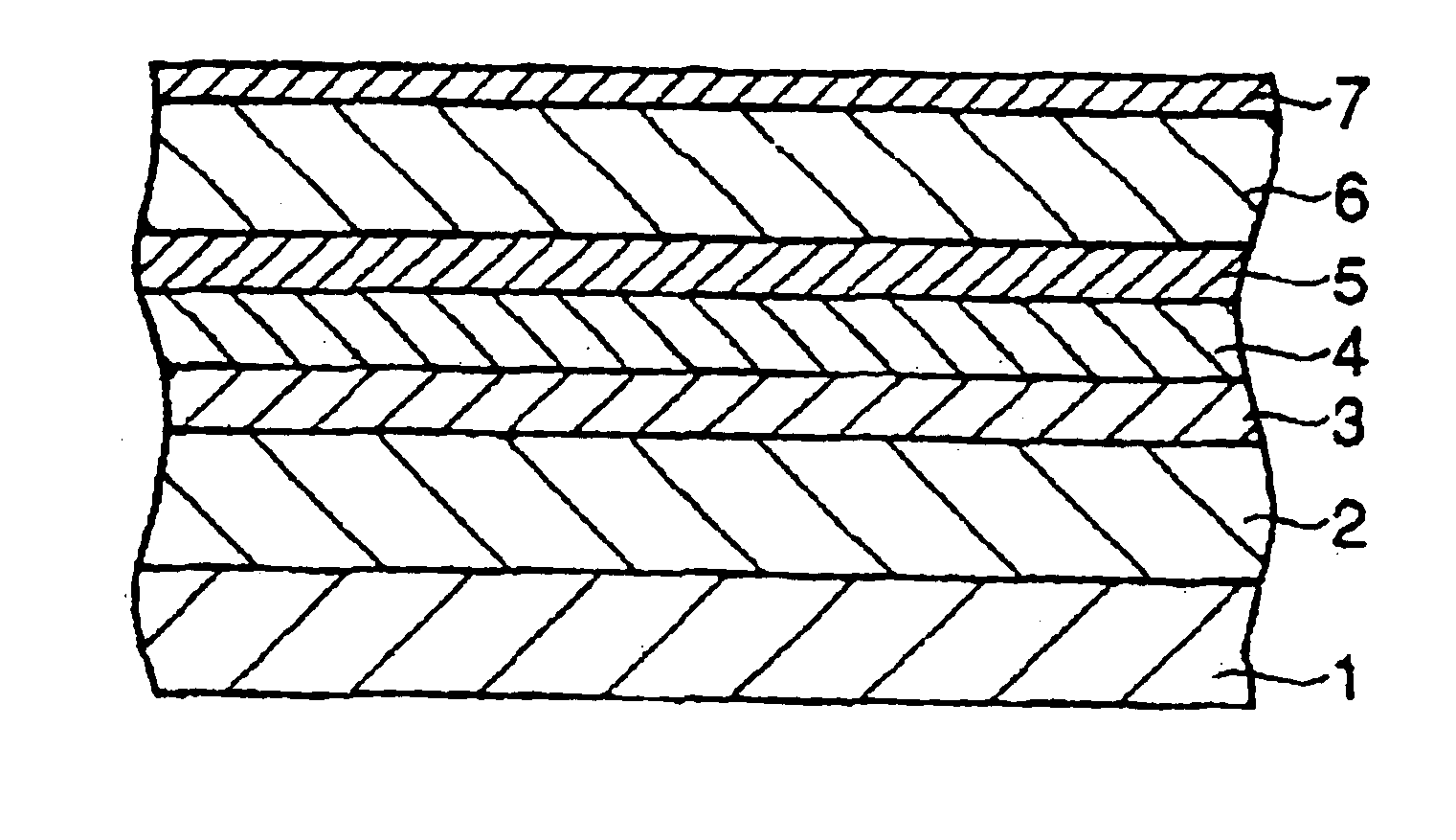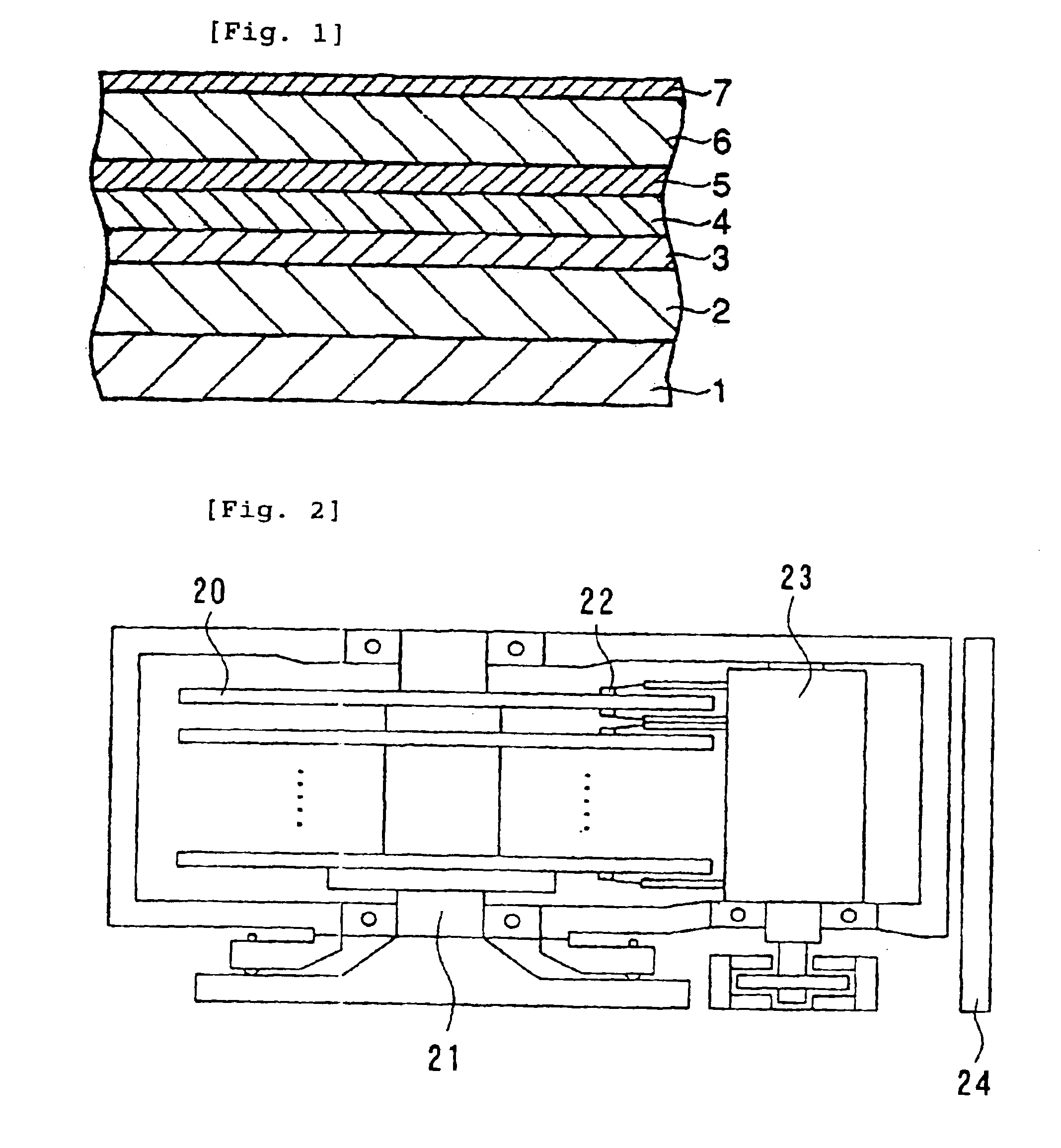Magnetic recording medium, production process thereof, and magnetic recording and reproducing apparatus
- Summary
- Abstract
- Description
- Claims
- Application Information
AI Technical Summary
Benefits of technology
Problems solved by technology
Method used
Image
Examples
example 1
[0101]A glass substrate (outer diameter: 65 mm, inner diameter: 20 mm, thickness: 0.635 mm, surface roughness: 3 Å), serving as a non-magnetic substrate, was placed in a DC magnetron sputtering apparatus (Model: C3010, product of ANELVA, Tokyo, Japan). After the apparatus was evacuated to 2×10−7 Torr (2.7×10−5 Pa), a first non-magnetic undercoat layer (layer A) (thickness: 200 Å) was formed at ambient temperature by use of a target containing a Cr—Ta-based alloy (Cr: 65 at %, Ta: 35 at %). Subsequently, a second non-magnetic undercoat layer (layer B) (thickness: 200 Å) was formed at ambient temperature by use of a target containing a Co—W—B-based alloy (Co: 57 at %, W: 40 at %, B: 3 at %).
[0102]Thereafter, the substrate was heated to 250° C., and then exposed to oxygen at 0.05 Pa for five seconds. Subscqucntly, a third non-magnetic undercoat layer (layer C) (thickness: 60 Å) was formed by use of a target containing a Cr—Ti alloy (Cr: 80 at %, Ti: 20 at %), A non-magnetic intermediat...
example 2
[0105]The procedure of Example 1 was repeated, except that a first non-magnetic undercoat layer (thickness: 200 Å) was formed by use of a target containing a Cr—Nb-based alloy (Cr: 65 at %, Nb: 35 at %) instead of the Cr—Ta-based alloy (Cr: 65 at %, Ta: 35 at %).
example 3
[0106]The procedure of Example 1 was repeated, except that a first non-magnetic undercoat layer (thickness: 200 Å) was formed by use of a target containing a Cr—Ti-based alloy (Cr: 65 at %, Ti: 35 at %) instead of the Cr—Ta-based alloy (Cr: 65 at %, Ta: 35 at %).
PUM
 Login to View More
Login to View More Abstract
Description
Claims
Application Information
 Login to View More
Login to View More - R&D
- Intellectual Property
- Life Sciences
- Materials
- Tech Scout
- Unparalleled Data Quality
- Higher Quality Content
- 60% Fewer Hallucinations
Browse by: Latest US Patents, China's latest patents, Technical Efficacy Thesaurus, Application Domain, Technology Topic, Popular Technical Reports.
© 2025 PatSnap. All rights reserved.Legal|Privacy policy|Modern Slavery Act Transparency Statement|Sitemap|About US| Contact US: help@patsnap.com


